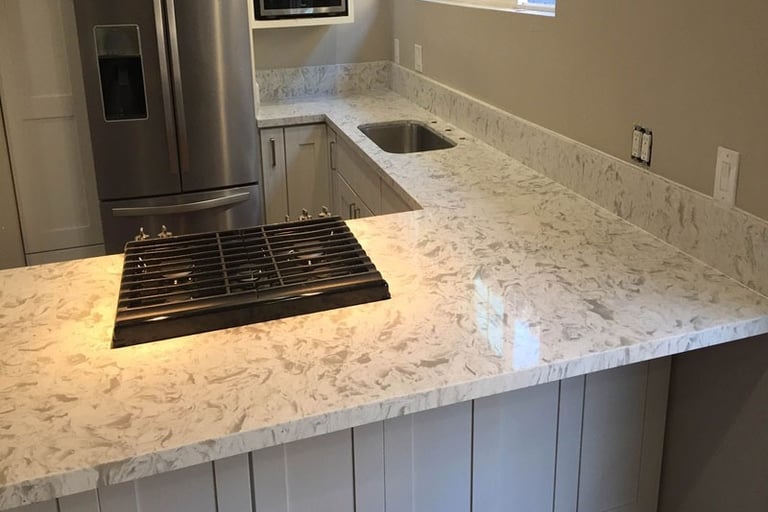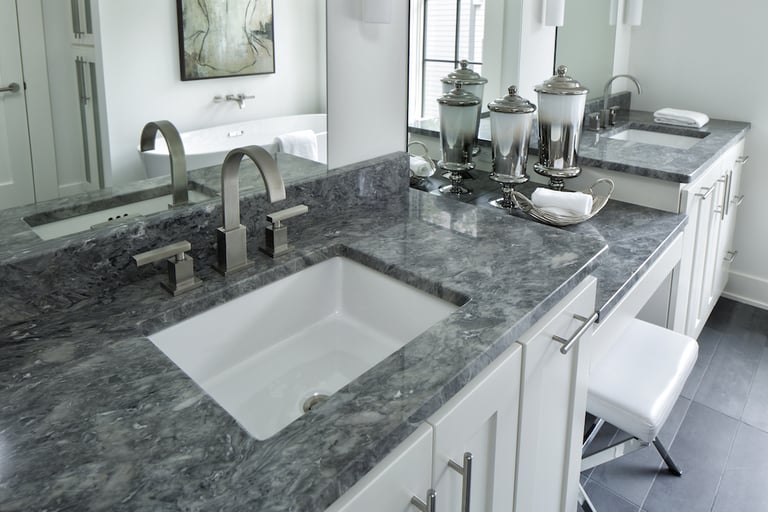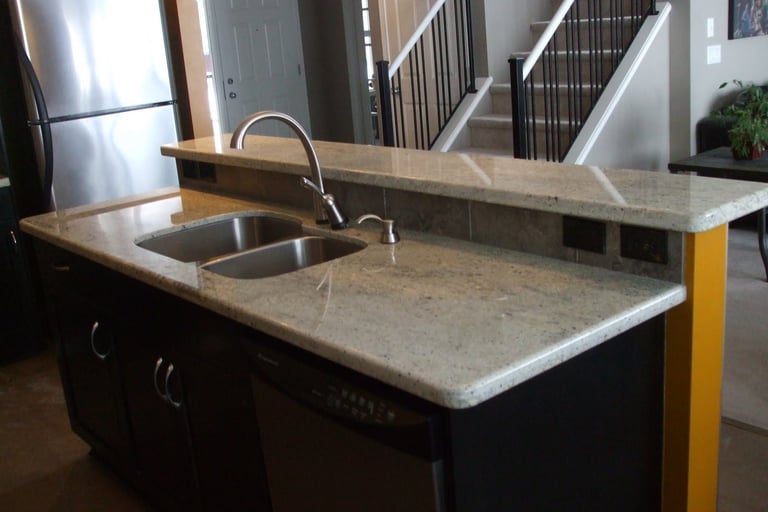OUR PROCESS
Granite countertops are a popular choice for their beauty, durability, and versatility. If you're considering installing granite countertops in your kitchen or bathroom, understanding the installation process is essential to ensure a successful and seamless outcome. From initial measurements and material selection to fabrication, template creation, and final installation, this comprehensive guide will walk you through each step of the granite installation process.
Step 1: Consultation and Measurements: The process begins with a consultation between you and a professional granite installer. During this stage, you'll discuss your design preferences, material options, edge profiles, and any specific requirements. The installer will take detailed measurements of your space, including cabinets, appliances, and existing countertops, to ensure accurate fabrication.
Step 2: Material Selection: Once measurements are complete, it's time to choose the granite slab for your countertops. Visit a showroom or granite supplier to view available options and select the slab that best matches your desired color, pattern, and overall aesthetic. Keep in mind that granite is a natural stone, so each slab will have unique variations.
Step 3: Fabrication: The selected granite slab is sent to a fabrication facility where it will be cut and shaped according to the measurements and template. Experienced stone fabricators use advanced machinery and tools to precision-cut the granite, including the sink and cooktop cutouts, as per your specifications. They will also apply edge profiles, polish the edges, and make any necessary adjustments to ensure a proper fit.
Step 4: Template Creation: Before the final fabrication, a template of the countertop layout is created. Templating involves using specialized tools to create an accurate pattern of your cabinets and other relevant structures. This template serves as a guide for the fabricators, ensuring the granite slab is precisely cut and shaped to fit your space.
Step 5: Preparation and Removal: On the day of installation, your existing countertops, if any, are carefully removed. This involves disconnecting plumbing fixtures, appliances, and any other items attached to the countertops. The removal process should be executed with caution to prevent damage to cabinets and surrounding areas.
Step 6: Installation: With the old countertops removed, the installation process begins. The fabricators transport the custom-cut granite slabs to your home and carefully position them onto the cabinets. They ensure a proper fit, align the seams if multiple slabs are used, and make any necessary adjustments to ensure a level and seamless installation. The granite slabs are securely attached to the cabinets using adhesive materials.
Step 7: Sealing and Finishing: After the granite countertops are securely in place, the next step is sealing. Granite is a porous material, so applying a high-quality sealant helps protect it from stains and moisture penetration. The installer will apply the sealant and allow it to cure for the recommended time. They will also perform any necessary finishing touches, such as smoothing the edges and cleaning the surfaces.
Step 8: Reconnection and Cleanup: Once the installation is complete, the plumber can reconnect the plumbing fixtures, such as sinks and faucets, to the granite countertops. Any appliances that were disconnected during the process are also reinstalled. The installation team will clean up the workspace, removing any debris and ensuring that the area is left tidy and ready for use.
Conclusion: The process of installing granite countertops involves several important steps, from consultation and measurements to material selection, fabrication, template creation, installation, and finishing touches. By understanding each stage of the process, you can work closely with professionals, make informed decisions, and ensure that your granite countertops are installed to the highest standards. With proper care and maintenance, your granite countertops will provide beauty, functionality, and durability for years to come.





